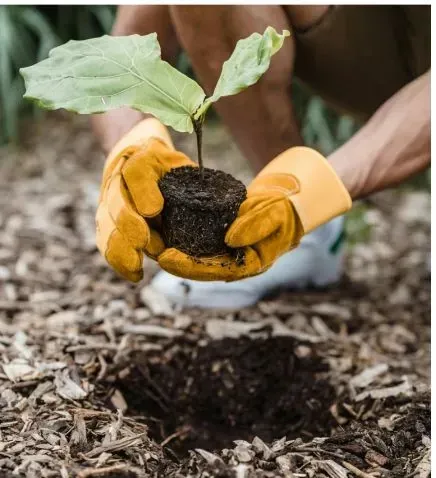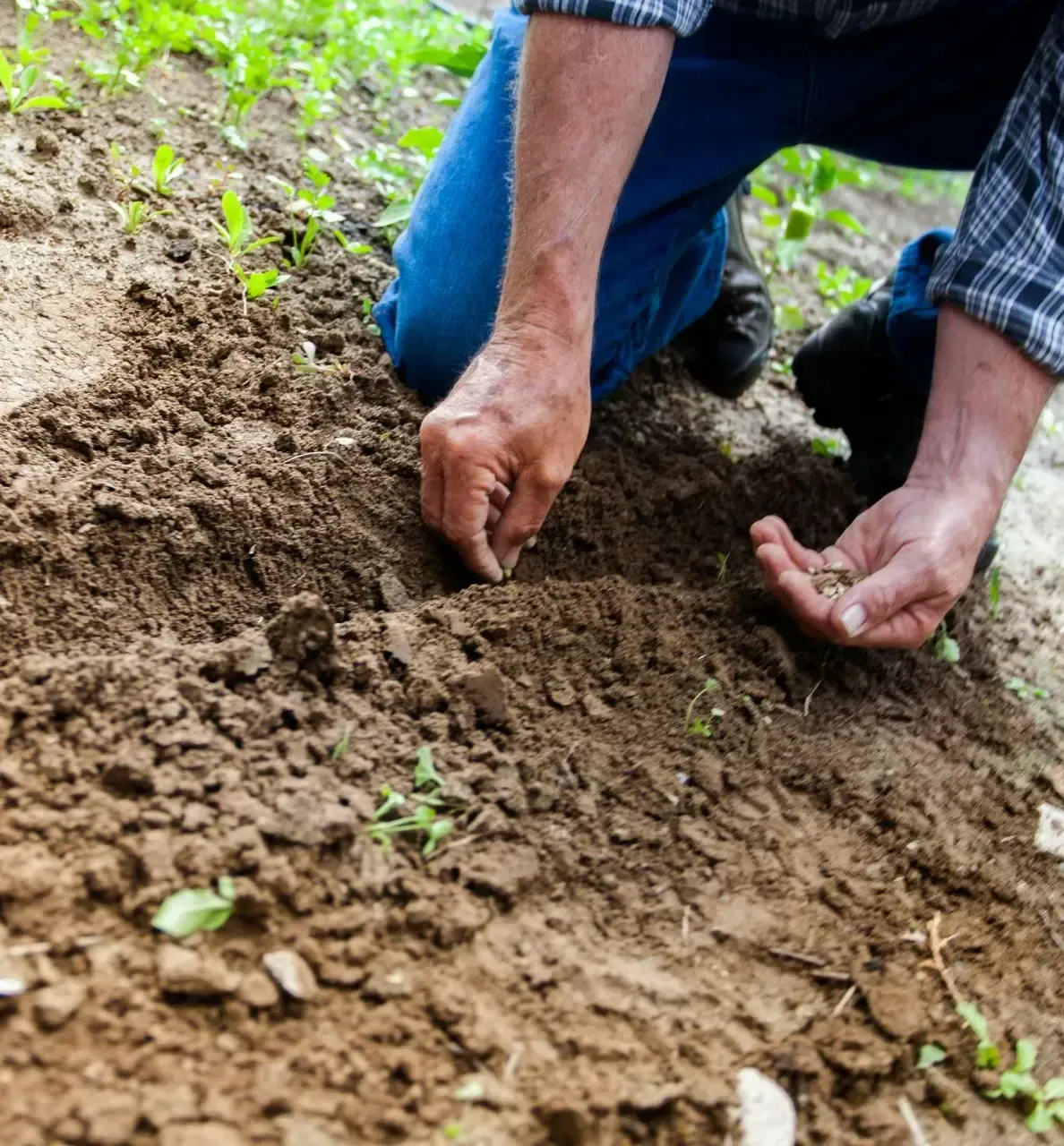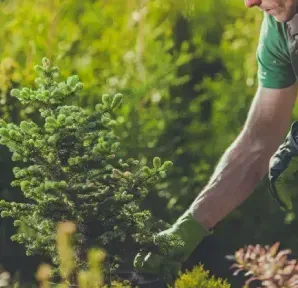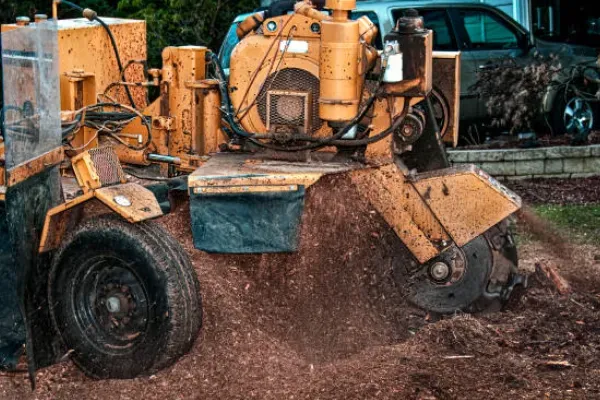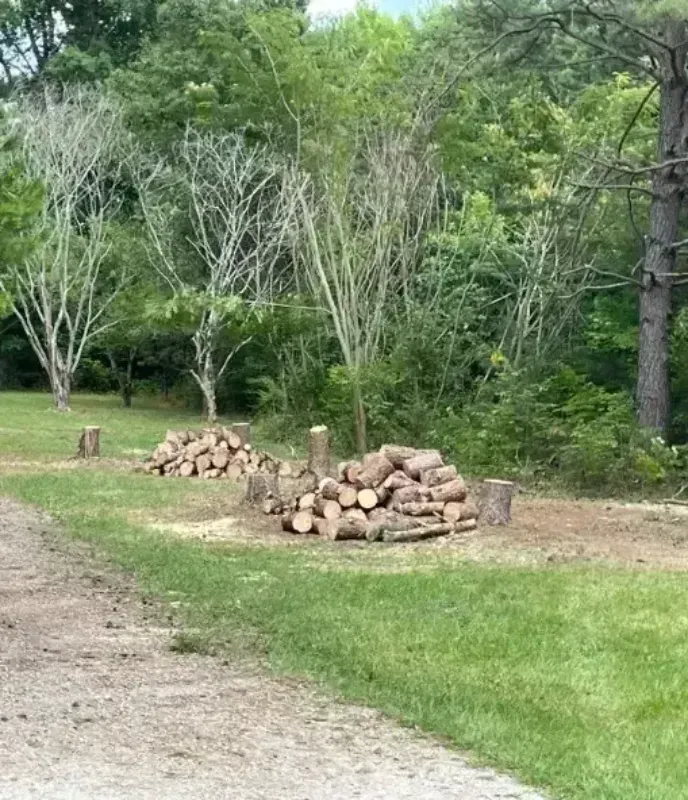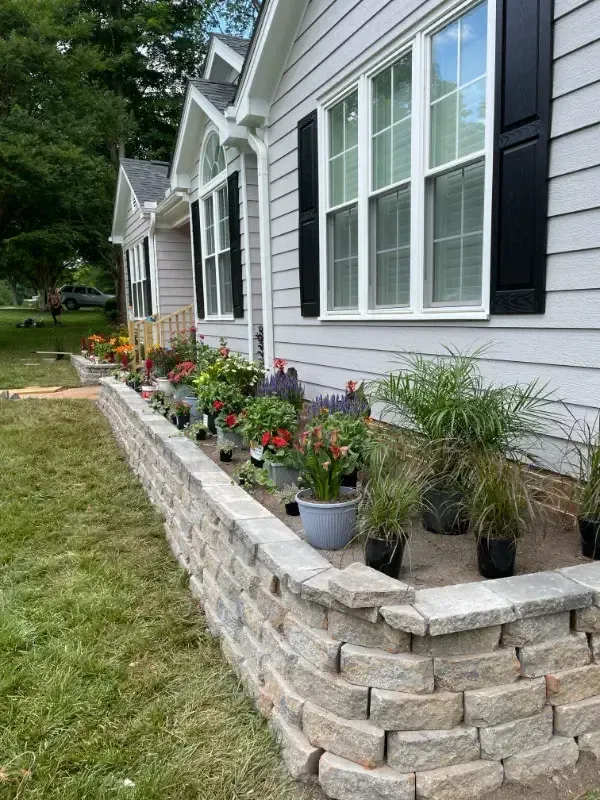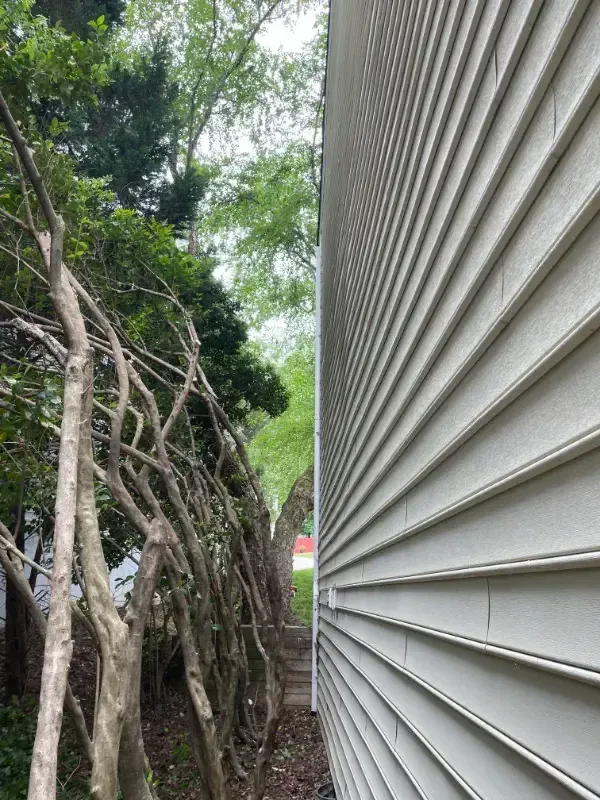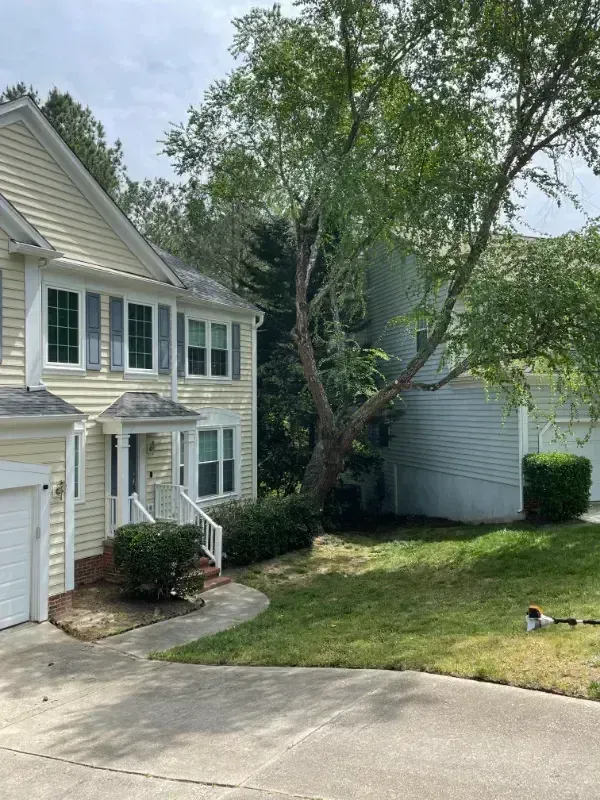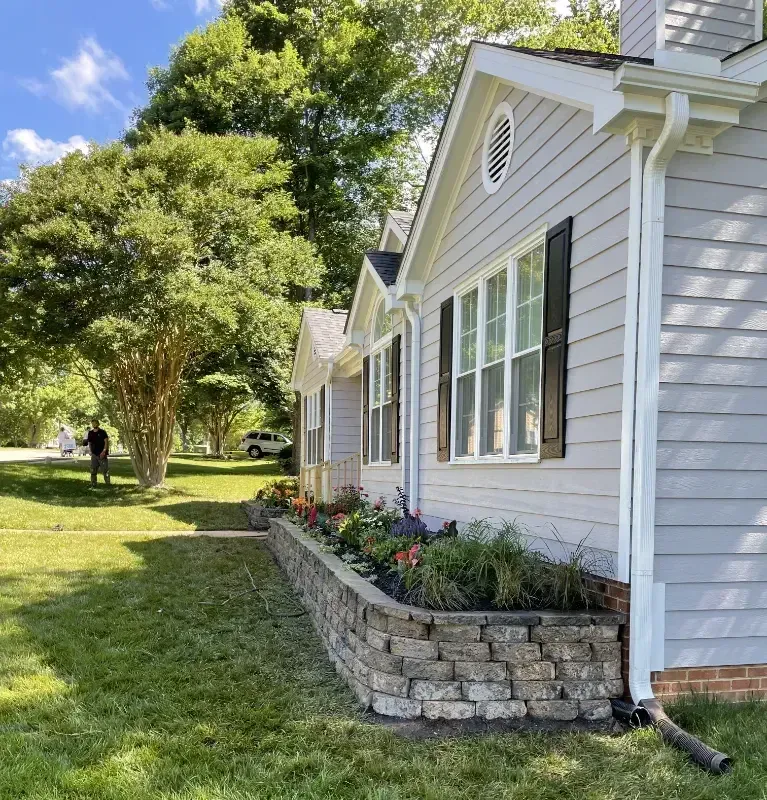A Homeowner’s Trusty Guide to the Basics of Tree Pruning
Why Pruning Is Essential for Tree and Shrub Health
Tree pruning is like a wellness check-up for your landscape. Tree pruning removes what no longer benefits the plant, such as dead limbs, diseased branches, and weak growth. This allows the tree or shrub to direct its energy where it matters most. A properly pruned tree grows stronger, maintains a balanced shape, and is less vulnerable to storm damage and disease.
Without regular pruning, trees can become overcrowded and stressed, making them more susceptible to pests and decay. Over time, this weakens the entire plant. Pruning plays a vital role in maintaining the long-term health and stability of your trees.
Choosing the Right Season for Tree and Shrub Pruning
The right time to prune makes all the difference in a tree’s health and growth. While the best time varies by species, late winter or early spring is often ideal. Trees are still dormant during this period, which means less sap loss, a lower risk of disease, and a better view of the branch structure for precise cuts.
Spring-blooming shrubs, however, should be pruned right after they flower. Pruning too soon can remove next season’s buds, reducing future blooms. Understanding the right timing is just as important as proper technique, ensuring healthier growth and better long-term results.
Tools Every Homeowner Needs for DIY Pruning
The right equipment makes pruning easier, safer, and more efficient. A few essential tools can handle most pruning jobs, from shaping small shrubs to removing larger branches.
- Bypass Pruners – Ideal for small branches and stems, providing clean, precise cuts.
- Anvil Pruners – Best for cutting dead wood, using a crushing action to break through tough material.
- Loppers – Designed for medium-sized branches, offering extra reach and leverage.
- Pruning Saw – Necessary for cutting thicker branches that pruners and loppers cannot handle.
- Pole Saw – Allows for trimming high branches without needing a ladder.
- Hedge Shears – Used for shaping hedges and ornamental shrubs with clean, even cuts.
- Hand Saw – Useful for controlled cuts on branches too thick for loppers but not requiring a chainsaw.
- Chainsaw – Essential for cutting large branches or removing sections of trees.
- Gloves – Protects hands from cuts, splinters, and thorns.
- Safety Glasses – Shields eyes from debris while pruning overhead branches.
Sharp, well-maintained tools make clean cuts, helping trees heal faster and reducing the risk of disease. Whether pruning for aesthetics or tree health, proper equipment and safety precautions are essential.
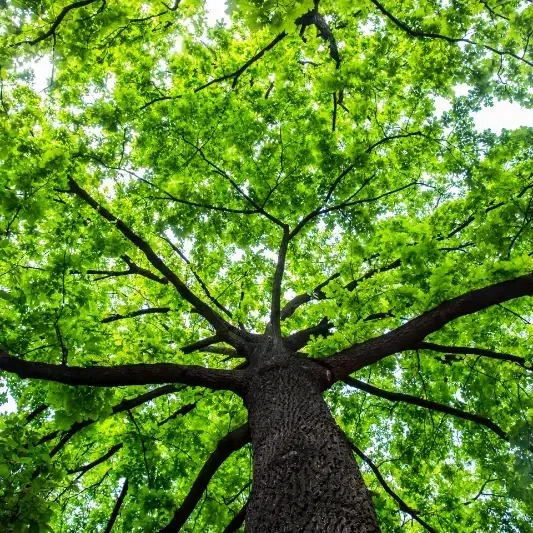
How to Identify Dead, Diseased, or Damaged Branches
Effective tree pruning starts with identifying what needs to be removed. Dead branches are dry, brittle, and often break with little effort. Diseased wood may show discoloration, fungal growth, or sunken cankers. Wind-damaged limbs, especially those with cracks or splits, can become hazardous over time.
A careful inspection helps prevent problems before they worsen. Dead and diseased branches drain energy from the tree and can fall without warning. Removing them early not only improves tree health but also reduces safety risks for your property. Regular pruning ensures stronger, more resilient trees.
Techniques for Properly Pruning Shrubs and Small Trees
When pruning, make precise cuts just above a healthy bud or branch junction. Leaving long stubs can lead to decay and disease. Avoid topping trees, as it weakens their structure and disrupts their natural form. Instead, focus on thinning cuts to improve airflow and encourage strong, balanced growth.
Shrubs benefit from thoughtful shaping. Remove inward-facing branches to prevent overcrowding and ensure proper airflow through the center of the plant. This helps reduce disease risk and promotes even growth.
Pruning trees requires both technical knowledge and a creative touch. Every cut influences the tree’s future health and appearance, so make them with care.
Avoid These Pruning Pitfalls: Tips for Healthier Trees
Over-pruning is a common mistake that can weaken a tree by reducing its ability to produce energy. Removing more than 25% of the canopy in one season can leave the tree stressed and vulnerable. To avoid this, trim conservatively and spread major pruning over multiple seasons.
Improper cuts are another issue. Cutting too close to the trunk or leaving jagged edges can create entry points for pests and disease. Always cut just outside the branch collar and use sharp tools to make clean, precise cuts.
Ignoring timing is another misstep. Pruning at the wrong time of year can lead to poor healing or fewer blooms. Research the best pruning window for each species to ensure healthy growth.
How Pruning Encourages Growth and Flowering
Thoughtful tree pruning helps plants use their energy efficiently. Removing weak or overcrowded branches improves air circulation, allows more sunlight to reach the canopy, and ensures nutrients are directed to the healthiest growth.
The benefits go beyond appearance. Stronger limbs, healthier foliage, and more abundant blooms all come from proper pruning. For flowering shrubs, strategic cuts can shape when and where they bloom, enhancing their natural beauty.
Safety Tips for DIY Pruning Around Your Property
Safety should always come first when pruning trees. Never work alone if you are using ladders or saws, and always wear safety goggles to protect your eyes from flying debris. A good pair of gloves provides better grip and keeps your hands protected from sharp branches and rough bark.
Avoid pruning in wet or windy conditions, as slippery surfaces and unpredictable movement increase the risk of injury. If branches hang over power lines or structures, leave the job to professionals.
Maintaining a Regular Pruning Schedule for Long-Term Plant Health
Regular tree pruning is an investment in the long-term health and stability of your landscape. Annual inspections and seasonal maintenance prevent small issues from turning into larger problems. Young trees develop stronger structures with early pruning, while mature trees benefit from periodic thinning to reduce weight and improve resilience. A well-maintained pruning routine also enhances the appearance of your property.
Knowing When to Leave Tree Pruning to the Professionals
When it comes to complex tree work, professional experience makes all the difference. If a tree is too large, near power lines, or showing signs of structural weakness, improper pruning can lead to damage or injury. Removing heavy limbs or making the wrong cuts can weaken the tree and create long-term problems.
That is where
Executive Tree Service NC comes in. Serving Creedmoor, NC and surrounding areas, we handle complex pruning, structural trimming, and high-risk removals with skill and precision. When safety is a concern, do not take unnecessary risks. Call
(919) 702-5904 for expert tree pruning you can trust.
